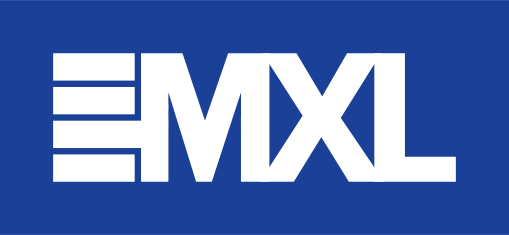Media eXchange Layer – Today and Tomorrow
MXL has the potential to become the standard for live media exchange inside data center environments

Cloud workflows for live video are no longer experiments; they are workhorses, constantly refined for technical and financial efficiency. File-based supply chains were first to embrace this shift, but cost, connectivity and business drivers have converged to make live cloud production and 24×7 linear workflows ready for adoption.
Yet this progress has come despite a capability gap which breaks an underlying principle, key to television’s success for the past century: the ability to choose best-of-breed solutions without compromise.
Why MXL Matters
SDI solved that problem for hardware. Standardized in the late 80s, it carried uncompressed video over a simple cable, but its real power came from ubiquity, which enabled decades of growth and innovation. Without SDI, even connecting a camera to a vision mixer could have required bespoke engineering, adding cost and delay.
In the cloud, that same effortless interoperability is missing. Every integration between vendors’ software adds friction and latency.
MXL, the Media eXchange Layer, is designed to restore that SDI-like simplicity for software. Its approach is called "shared memory" where applications write and read live media from a common buffer in a standard way. That turns complex interconnection into something instant and vendor-agnostic, just as SDI did in hardware.
Built in the Open
MXL is not being built behind closed doors. The EBU and North American Broadcasters Association (NABA), working with the Linux Foundation, have made it an open-source project with vendors and broadcasters collaborating on the SDK.
That openness means challenges such as connection setup, memory management, and signaling are solved once, in the open, rather than by each vendor alone. Broadcasters can trust it as a durable foundation, not proprietary lock-in.
The professional video industry's #1 source for news, trends and product and tech information. Sign up below.
At IBC, momentum was clear. Demonstrations from the EBU, BBC, Techex and others showed different vendors’ software exchanging live media seamlessly. More than proofs-of-concept, they showed a new model of interoperability taking shape.
Looking Ahead: RDMA
The first milestone for MXL is shared memory within a single server. But broadcasters do not build infrastructures on one box, and scaling MXL across servers is the next challenge. That is where RDMA (Remote Direct Memory Access) comes in.
RDMA, and specifically RoCEv2 (RDMA over Converged Ethernet), allows one machine to directly access another’s memory across an IP network. By bypassing the kernel and avoiding CPU overhead, it moves data at high throughput with minimal latency. RoCEv1 has long been used in hyperscale data centers; RoCEv2 adds IP and UDP layers that make it usable across routed networks. For media, that means extending MXL’s shared-memory principles across distributed compute infrastructures.

The contrast with today’s methods is sharp. Traditional data movement relies on forwarding through the kernel, with CPUs shouldering the packetization load. That is costly in compute cycles and becomes a bottleneck as throughput demands rise.
More Than Raw Transport
Raw access to memory is only half the story. MXL addresses the other half: how to represent, signal and manage media in memory so applications can use it in real time. How do systems announce intent to read or write? How long should data be held? How should it be indexed and retrieved? These questions are being answered collectively through the open-source SDK, ensuring vendors adopt the same methods rather than reinventing them.
MXL sits within the EBU’s Dynamic Media Facility (DMF) initiative which takes a multi-layer approach to enabling media organizations to move to a completely software-based infrastructure both on the ground and in the cloud. From application semantics down to networking, the ability to share and orchestrate live data efficiently between compute nodes is central to enabling software-defined broadcasting that is interoperable, scalable and flexible, without locking organizations into monolithic systems.
The past few years have seen multiple merges and splits in large, multinational organizations, while publicly funded broadcasters are under more pressure than ever to excel despite funding squeezes. To deal with organizational change at the same time as continued movement in consumer behaviour, the financial and technical flexibility that software-defined infrastructure offers is a key enabler – not to mention a differentiator for those that can embrace it first.
The Promise Ahead
At Techex, we see that MXL has the potential to become the standard for live media exchange inside data center environments, giving broadcasters and studios the same freedom of choice in software workflows that SDI guarantees in hardware. It is efficient, it is open, and it is being built collaboratively by the industry.
The first demonstrations have shown the concept works very well. The next phase, with RDMA, will extend its reach across distributed environments. Beyond that, the shared foundation being built today points to an era where media organizations can once again build infrastructures from best-of-breed components without compromise. That possibility, moving from vision to prototype, is why momentum around MXL continues to accelerate.
This article was originally published on TV Tech's sister brand, TVBEurope.
Russell Trafford-Jones is industry engagement manager at Techex
